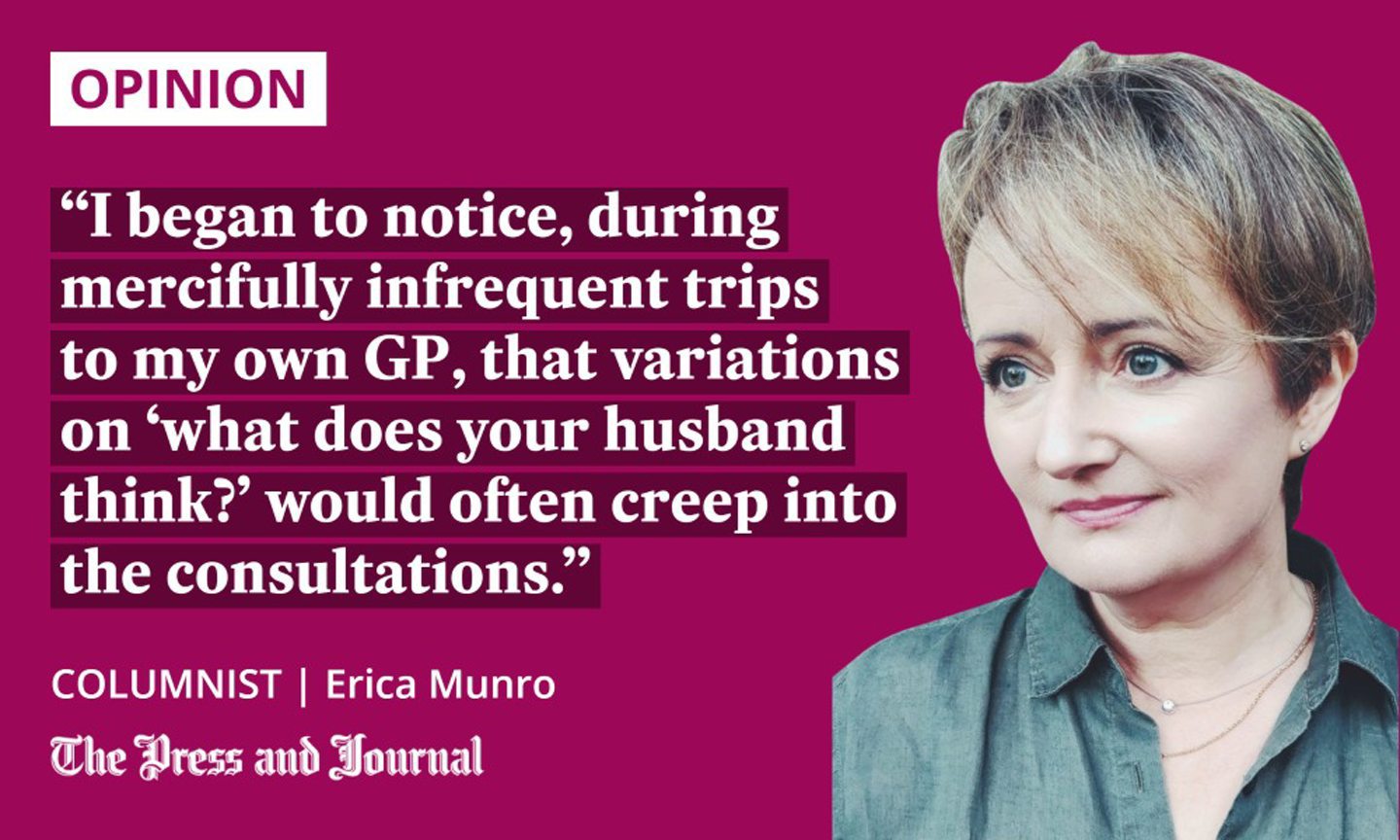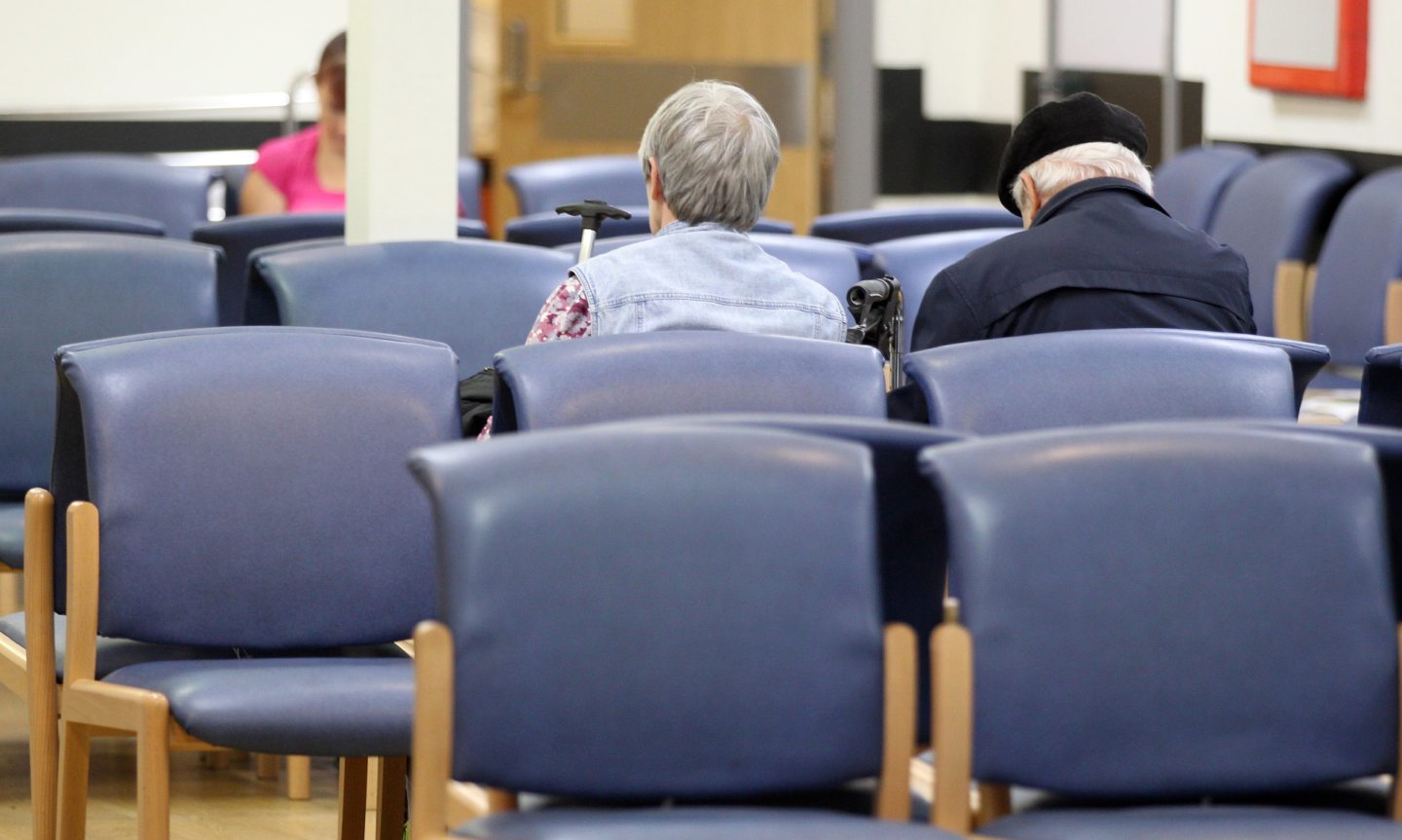For a short time, in my teens, I wanted to become a doctor.
All I needed was a can-do attitude, plus six As in my Highers at first sitting and, in no time at all – well, six or seven years, tops – I’d be running around in a white coat, stethoscope flying, barking: “Charge to 150… Clear! Great job, guys, we got him back.”
The universe had other ideas. I failed Higher maths comfortably, and the only person more surprised than me that I scraped a pass in chemistry was Dr Yule, my chemistry teacher.
So, I did the next best thing and married a doctor instead and, 31 glorious years later, I can attest that it’s been a mixed blessing.

It’s a village, here in the Highlands. Everybody knows everybody, and no more so than in the tiny, overworked medical profession.
As the years rolled by, I began to notice, during mercifully infrequent trips to my own GP in the neighbouring practice, that variations on “what does your husband think?” would often creep into the consultations. At first I didn’t mind, and parroted whatever it was I’d shared with him earlier, followed by his thoughts on the matter. Friends, and all that.
My husband had to point out my presence
It grew sinister. Once, after eight weeks in hospital whilst pregnant, I recall lying there, frightened, blood pressure through the roof, listening dazedly as the consultant addressed my husband at length, above my head in every sense, about setting up an intensive care bed “for her”, just in case.
My husband had to point out my presence. I said nothing; I wasn’t well. The rage only hit later.
I began to be on alert for the phenomenon until one day, a couple of years ago, I found myself back on a hospital bed, recalled for a scan after my earlier breast screening appointment showed up something questionable. I was scared.
In walked the doctor, pleasant and reassuring. He began examining the offending boob, carefully and professionally. Until he opened his mouth. “We should get your husband in; see what he thinks,” he murmured, as he pressed and probed.
For once, I was ready. “I think we’ll leave my husband out of this, thank you,” I replied quietly. That’s about as rude as I get.
No bending the rules at home
Then there’s home life, the small stuff, where having your own pet doctor on tap isn’t the picnic some might imagine. Especially when your home-doctor is annoyingly ethical, like mine.
For example, one day, I presented him with the top of my head.
“Take a look at this.”
“Is it itchy?”
“Yes. Can you see anything?”
“Hang on, turn round.”
“Like that?”
“Yes. Itchy there?”
“Yes. Is it nits?”
“No. Not nits.”
“Sure it’s not nits?”
“It’s not nits.”
“So, what then, if not nits?”
“Looks fungal.”
“Lovely. Is it alive?”
“No.”
“Is there stuff for it?”
“Yes. On prescription.”
“Do you have a tube of it in your bag?”
“Yes. But you can’t have it.”
“Please? Just a wee scoosh?”
“As you well know…”
Overthinking is inevitable
So, I arrive at the doctors’ surgery, complete with my fungus and a scrap of paper with the name of the tube of stuff written on it.
I sit in the waiting room and worry. Not about the fungus, but about the consultation. I know what I’ve got. I know what I need.
If she gives me something different that doesn’t work, I guess I could force open my husband’s bag, steal the tube then burn the house down?
The doctor will know that I know what I’ve got, and she will also know that I think I know what I need.
I never know how to approach this. I know she will expect me to say that I know what I’ve got and I know she won’t be surprised if I say what I think I need. But I know that in so doing I will disrespect what she knows.
I know it’s important not to overthink this, but I don’t know how not to.
I am called through.
“I’ve got an itchy scalp and, well, think it might be fungal?” She examines my scalp.
“It’s not nits,” I add, as respectful anxiety prompts a mumbled follow-up: “At least, I think it’s not nits.”
“No, it’s not nits. It does look fungal.”
I can feel the scrap of paper in my pocket. I don’t know if I should mention it. If she gives me something different that doesn’t work, I guess I could force open my husband’s bag, steal the tube then burn the house down?
She prescribes what I have got written on the scrap of paper. Relieved, I tell her about my worry, thank her and make to leave.
She leans forward. Something has shifted in the room. “Erica, if there’s anything you ever need to discuss, I’m here, you know?” I freeze.
Her eyes meet mine. “Anything at all.”
I am so pierced by her sensitivity, I almost start crying. She knows.
Erica Munro is a novelist, playwright, screenwriter and freelance editor








Conversation